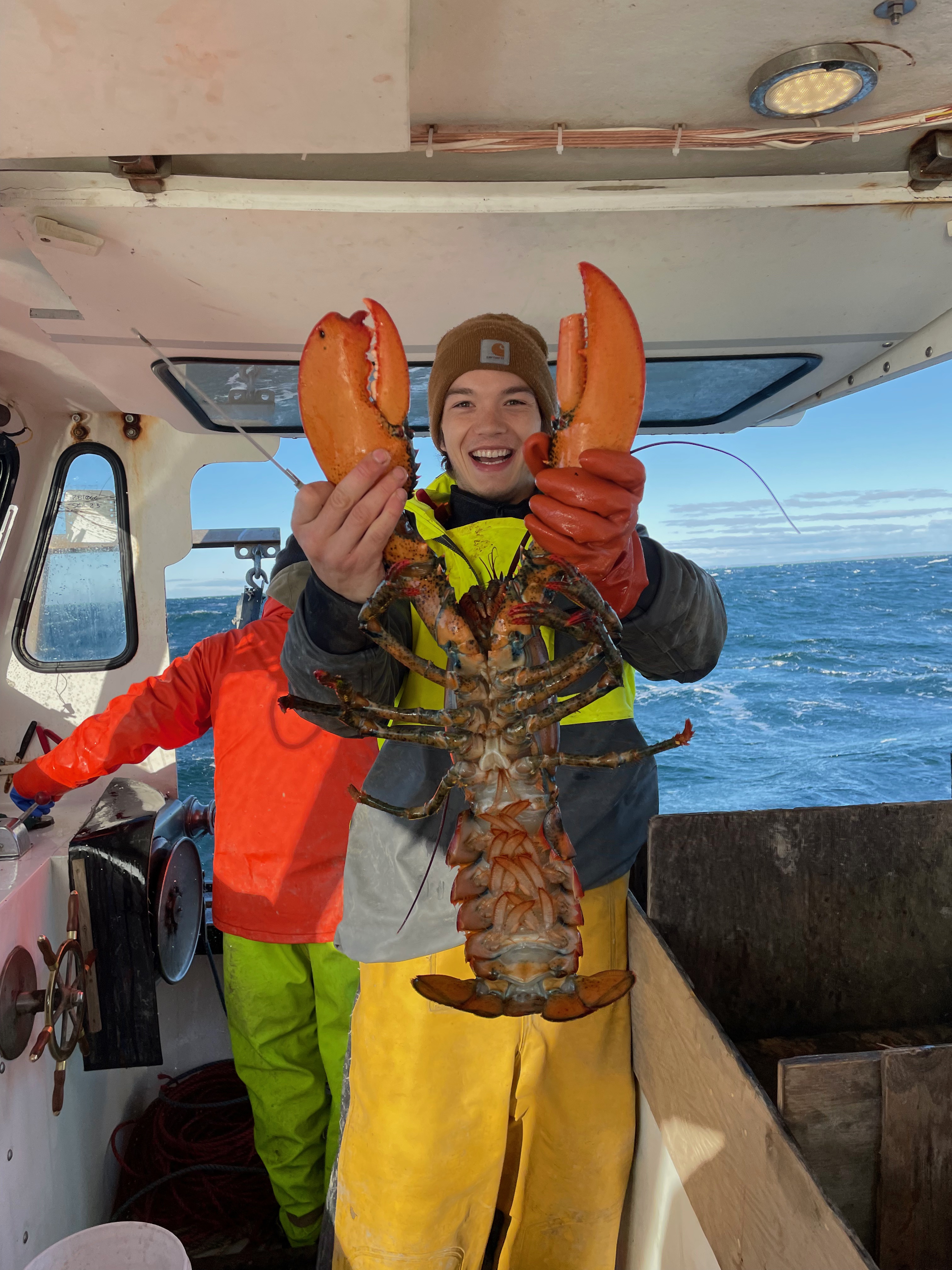Pre-Deployment Monitoring of the American Lobster Fishery for a Floating Wind Installation
Date:
The first floating commercial scale (11.4 MW) offshore wind turbine in the western hemisphere is scheduled to be deployed in the Monhegan Island Lobster Conservation Area, ME during 2024. Understanding potential impacts of this type of structure to the Maine lobster industry, landings valued at ~$725 million in 2021, is necessary for responsible wind energy development in the Gulf of Maine. We started the first phase of a before-after control-impact commercial trapping survey targeting American lobster, Homarus americanus, in collaboration with local lobstermen, fall 2021 (Oct. 8- Nov. 21). The survey uses a randomly stratified design over two gridded 1 km2 regions, a test and control site. Grid spaces were randomly selected for sampling with co-located ventless and vented lobster traps, allowing each sampling location to target sublegal and legal lobster size-classes. During the fall 2021 survey, traps from each site were hauled nine times with a target soak time of four days to establish baseline catch metrics. We recorded carapace length, sex, cull, molt and egg status and tagged each lobster with a unique ID T-Bar tag for mark-recapture population analysis using an open-population modified-CJS method. While the spring iteration of the pre-construction survey has yet to be completed, initial results from generalized additive models of catch per trap during the fall survey indicate that catch of sublegal and legal lobsters increases significantly as trap temperature increases. Trap type effects differ by size class with higher expected catch of sublegal lobsters in ventless traps and legal lobsters in vented traps. Additionally, there were higher catch rates in the test site for legal lobsters but a site-specific effect was not observed in the sublegal size-class. Determining floating offshore wind development impacts to fisheries necessitates approaches that consider effects on catch of both fine-scale environmental conditions and survey design.


